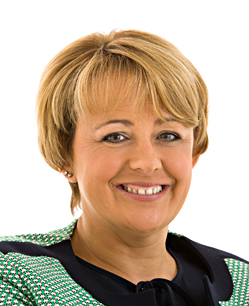
Since joining ukactive earlier this year, one thing has been top of my priority list: providing a stable footing for workforce development that’s able to meet the challenges of the future.
There’s nothing lacking when it comes to our sector’s ambition, potential to grow or desire to have a greater impact on the health of the nation. However, let’s be frank: without getting our own house in order in terms of our workforce, we will never achieve our potential. We need to support employers of all sizes with a technical and regulatory system that doesn’t just maintain the quality and standards of the industry as it is today, but that supports the industry as it strives to be in five, 10, 20 years’ time.
Four objectives
At the outset of tackling this challenge I had four key objectives.
The first was to deliver the single, unified skills and workforce development strategy – through Levels 1–7 and covering all job roles – that employers within the ukactive membership base have been demanding: a single structure that brings a single method of assessing quality, awarding qualifications and recognising professional qualifications through registration.
Secondly, our goal must be to improve the breadth and reach of the role of the physical activity professional beyond its traditional borders, while maintaining the quality and standards of its core functions.
Thirdly, while we’re very proud that there’s a low barrier to entry for this sector (and no glass ceiling), we need a method of raising credibility and standards – something that’s critical to the continued development of this sector.
Finally, I wanted to make sure that any workforce strategy recognised that working in the physical activity sector in any role, and at any level, provides a good job and a promising career for an enormous number of young people in the UK.
Addressing the specifics
Over the past month, we’ve seen huge progress towards a new system of regulation and management of the skills and learning system, spurred by the sector itself.
At its first meeting on 7 July, the new ukactive Membership Council unanimously called for the ukactive board to throw the weight of employers’ support behind the sector’s chartered institute, CIMSPA, to take the lead role in making this happen.
This was followed by an open workshop involving employers, training providers and awarding organisations, starting the discussions regarding next steps and what a future workforce strategy may look like.
The crucial development at this event was that we started talking about specifics: how we begin to implement a system that’s fit for purpose; and what questions we’ll need to answer if we’re to forge ahead.
What next?
In our forward-looking view of the sector and the opportunities that exist within the public health system – working more closely with brands, charities and NGBs; alongside schools and colleges; and continually growing the product for the millions of consumers who engage with fitness every day – there’s no room for complacency when it comes to front-line delivery.
Indeed, in the not so distant future, we want to be having conversations with the medical and academic community that will lead to the introduction of a Chartered Physical Activity Professional – again raising the profile of the sector and allowing activity professionals to stand side-by-side with colleagues in the healthcare sector as trusted professionals.
The burning question is: what next? The sector has a clear desire to develop a new skills framework, but on whose shoulders does it fall to build this system, and what changes might employers expect to see?
In the coming months, teams at ukactive and CIMSPA will continue to consult with employers, training providers and awarding bodies to build a picture of what’s desired and needed, taking this forward to build a new system that has buy-in and commitment from across the sector.
